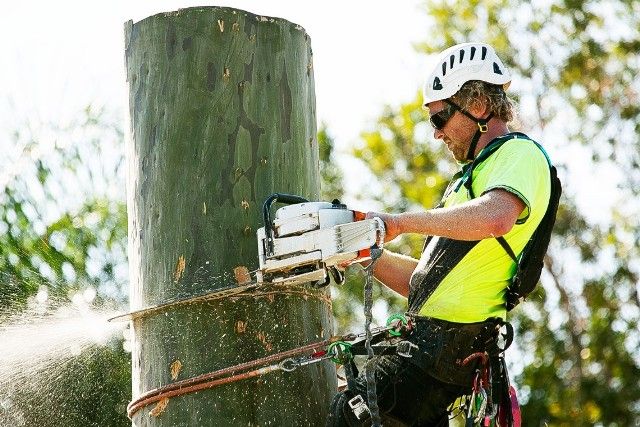
In recent years, the demand for sustainability has become a top priority for companies worldwide, including those in Australia. As environmental concerns intensify and consumer expectations for eco-friendly practices grow, Australian businesses have a unique opportunity to lead the way in adopting sustainable practices. By implementing innovative solutions that reduce their environmental footprint, businesses can create long-term value while meeting regulatory requirements and addressing stakeholder concerns. Here’s a look at how Australian companies can take the lead in sustainability through cutting-edge practices and technologies.
1. Embracing Renewable Energy Sources
Transitioning to renewable energy sources, such as solar, wind, and hydro, is one of the most impactful ways for businesses to reduce their carbon footprint. Australia’s abundant sunshine and strong wind potential make renewable energy a feasible and attractive option. Many companies are installing solar panels on-site to reduce reliance on the grid and cut down on energy costs. Additionally, businesses that cannot generate their own power can still make a significant impact by purchasing green energy from suppliers, which helps fund renewable projects across the country.
Example: Leading companies in the manufacturing and mining sectors, such as BHP and Rio Tinto, have already committed to large-scale solar and wind projects to power their operations, reducing emissions and setting an industry standard.
2. Implementing Circular Economy Practices
The circular economy model focuses on minimizing waste and maximizing the lifecycle of products through recycling, refurbishing, and reusing materials. By adopting circular economy principles, companies can reduce waste, conserve resources, and even save money in the long run. Businesses in sectors like retail, manufacturing, and construction are finding innovative ways to extend product lifespans and encourage reuse, ultimately diverting waste from landfills.
Example: Australia’s clothing and textile industry is embracing textile recycling, where businesses partner with recycling organizations to process and repurpose used garments, thus reducing the environmental impact of fast fashion.
3. Investing in Sustainable Supply Chains
A sustainable supply chain minimizes environmental impact at every stage of production, from sourcing raw materials to delivering finished products. Australian companies are increasingly focusing on ethical sourcing, working only with suppliers who meet environmental standards, and using eco-friendly packaging. This shift helps reduce emissions, supports biodiversity, and ensures fair labor practices. Leveraging technologies like blockchain can also enhance transparency and traceability in the supply chain, helping businesses ensure that each component meets sustainability goals.
Example: Woolworths and Coles, two of Australia’s largest supermarkets, have both committed to sustainable sourcing practices by partnering with certified suppliers and reducing the use of single-use plastics in their product lines.
4. Adopting Green Building Solutions
For companies with physical offices or production facilities, sustainable building practices are key to reducing their carbon footprint. Green building solutions can include energy-efficient lighting, HVAC systems, and water conservation technologies, as well as the use of sustainable materials. Australia has specific green building standards, such as the Green Star certification, which companies can aim to achieve as a mark of their commitment to sustainable building practices.
Example: Australia Post’s new Sunshine West facility in Melbourne is designed to achieve a 5-star Green Star rating by including features such as solar power, rainwater harvesting, and energy-efficient lighting.
5. Leveraging Digital Technologies for Efficiency
Digital transformation can also play a pivotal role in enhancing sustainability efforts. Advanced technologies like artificial intelligence (AI), the Internet of Things (IoT), and data analytics enable businesses to monitor and optimize resource use, thereby reducing waste. IoT sensors, for example, can monitor equipment and energy use in real time, allowing companies to make data-driven adjustments that minimize energy consumption and reduce emissions. Additionally, AI-powered analytics can streamline operations, reduce inefficiencies, and predict maintenance needs, helping to extend the lifespan of equipment.
Example: Sydney’s water management system incorporates IoT-enabled devices to monitor water usage in real time, minimizing waste and optimizing water distribution across the city.
6. Encouraging Sustainable Transportation Options
With transportation being a significant contributor to carbon emissions, many companies are turning to sustainable transport options to reduce their environmental impact. Electric vehicles (EVs) are becoming increasingly accessible, and some companies are investing in EV fleets or supporting public transport for employees. Additionally, last-mile delivery companies are exploring e-bikes, drones, and electric vans as greener delivery options.
Example: Woolworths is transitioning its delivery fleet to electric vehicles, aiming to reduce emissions associated with its home delivery service, while companies like Sendle offer carbon-neutral delivery options for small businesses.
7. Prioritizing Carbon Offsetting Programs
For some industries, eliminating emissions entirely is challenging, particularly those reliant on heavy machinery or extensive logistics. Carbon offsetting programs allow companies to invest in projects that absorb or reduce carbon emissions, such as reforestation, renewable energy projects, or soil conservation. While carbon offsetting should be part of a larger strategy focused on reduction, it offers a pathway for companies to reach net-zero emissions.
Example: Qantas Airways has introduced a carbon offset program, enabling passengers to offset emissions associated with their flights. This not only helps reduce the airline’s overall impact but also encourages customers to participate in sustainability efforts.
8. Fostering a Culture of Sustainability within the Workplace
Adopting sustainable business practices is not just about technology and strategy; it’s also about building a culture of environmental responsibility among employees. By promoting eco-friendly behaviors, companies can encourage employees to adopt sustainability practices both at work and home. Initiatives might include recycling programs, waste reduction campaigns, eco-friendly commuting incentives, and workshops on sustainable practices. A culture that values sustainability can lead to higher employee engagement and help build a company’s reputation as an environmentally responsible organization.
Example: Atlassian, an Australian software giant, actively promotes sustainability within its offices through initiatives such as waste reduction programs and incentives for employees who use public transport.
9. Partnering with Green Consultants and Industry Experts
To successfully implement sustainable practices, companies often partner with consultants specializing in green business strategies. These experts provide insights into industry-specific practices and technologies that can reduce a company’s environmental impact. Green consultants can assess a company’s current sustainability level, identify improvement areas, and help create actionable, measurable goals. Working with experts ensures that companies adhere to Australian regulatory standards while maximizing their sustainability potential.
Example: Businesses looking to achieve certification, such as the Australian Sustainable Business Certification, frequently partner with consultants to streamline processes and comply with green business standards effectively.
Final Thoughts
By embracing sustainable innovative business solutions, Australian companies can reduce their environmental footprint, support the local economy, and build resilient, future-ready businesses. From integrating renewable energy sources to promoting a culture of sustainability within the workplace, there are countless ways for Australian companies to make a positive impact. As these sustainable practices gain traction, businesses will not only improve their bottom lines but also contribute to a greener, more sustainable future for Australia.














